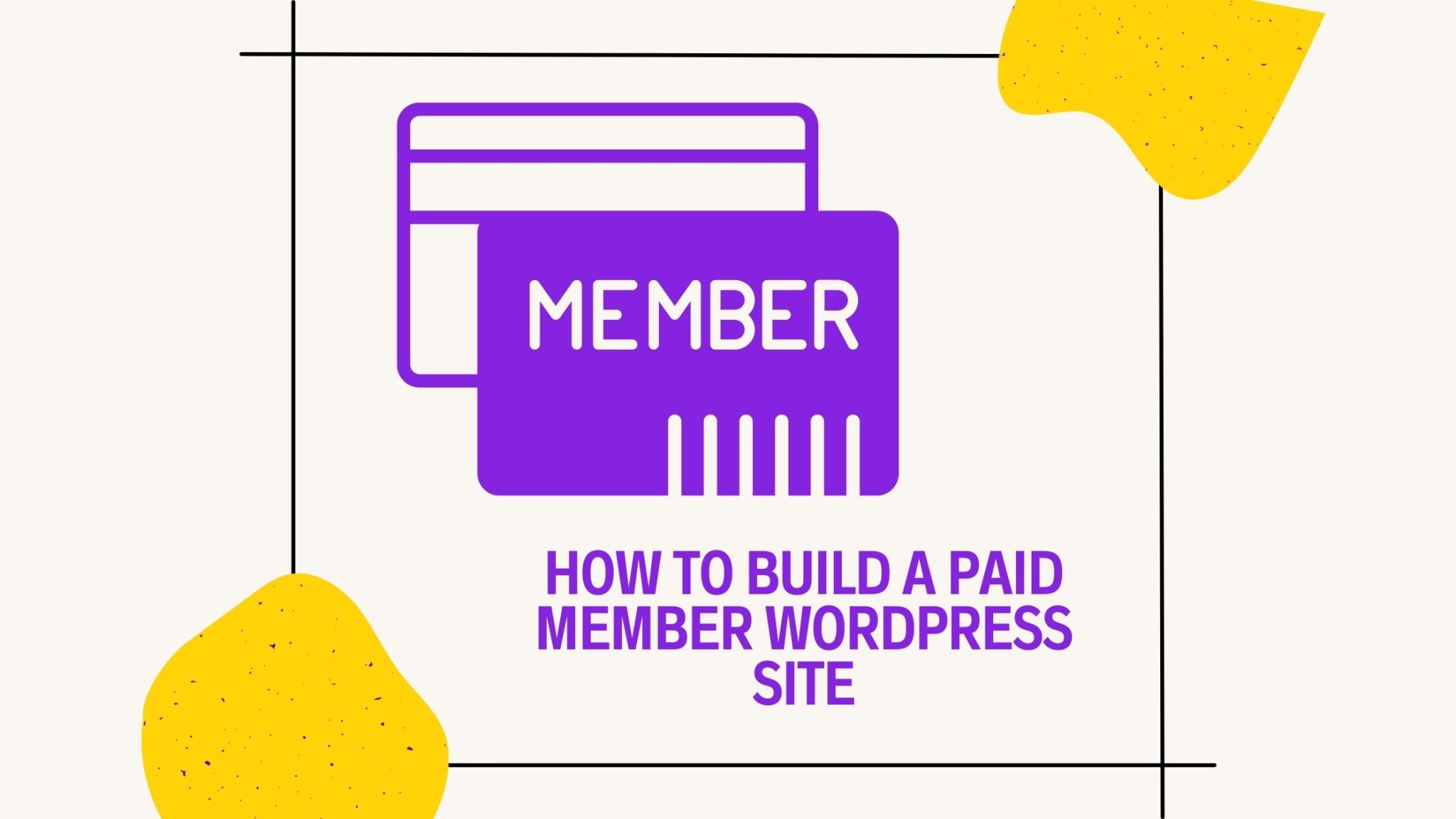Paid member subscription-based businesses are on the rise. If the 90s were all about the dot-com bubble, the 00s were about social networking, and the 2020s are all about close-knit communities (usually anchored in the Creator Economy.)
The good news?
Creating a paid member subscription site is easier than ever.
Here’s what you need to know about it.
Set a Goal and Create a Plan
If you’re serious about building a community, you must ensure you set a goal and create a plan. What are you trying to accomplish? Who is your target audience? What do you want them to get out of the membership?
These questions will help guide the process of building your paid membership site. Once you get your basic blueprint in place, think of the following elements:
Subject/ Niche
Choose a specific topic you want to talk about. It could be Artificial Intelligence, fitness, cooking, books — literally anything you can think of. What’s most important is to choose a subject you’re more than just “vaguely familiar” with. Pick something you are an expert in or something you can become an expert in — and more than anything, something you’re genuinely passionate about.
Business Model
What is your business model (i.e., how, more specifically, do you plan to make money with your membership site?) Consider the following:
- Advertising revenue
- Digital product sales
- Service offerings (consulting, webinars, etc.)
- Merchandise
- Restricting content access (which you can approach either as a one-time payment or as a subscription)
There’s no right or wrong business model in paid member sites. The key is knowing how to get consistent revenue, build a sustainable and scalable business for yourself, and focus on what works best for you and your audience.
Type of Subscription
Have you picked a subscription business model? That’s great! There are many benefits to subscription-based paid member sites; they allow you to build a long-term relationship with your members, keep them engaged and up-to-date with what’s happening in your community, and deliver consistent revenue streams.
There are several types of subscriptions you can implement in your membership site:
- Monthly
- Annually
- Quarterly
- Weekly
- Fixed usage
- Unlimited
- Freemium (where you start your members on a free membership plan and upsell them into a paid plan)
Choose a subscription model that works for your specific product/ membership site and audience. For example, if you offer a course in a specific area, you may want only to give people limited access to it. If, however, you create new content regularly, you may want to give members an unlimited access plan.
Marketing Plan
Just because you have a membership site and you told your friends about it, it doesn’t mean you will have a huge number of members. You will need to put together a marketing plan.
Think of strategies you can employ (either individual or as a mix) include:
- Email marketing
- Ads for membership sites
- SEO
- Social media outreach
- Content marketing
- Affiliate programs
- Press and PR
- Word-of-mouth

Choose Your Platform
Knowing where you want to take your membership site is very important because it will directly impact your chosen platform. There are many popular platforms available:
- WordPress (which is inexpensive and offers a lot of customization)
- Wix (which is user-friendly but may not offer as much customization)
- Squarespace (which is relatively cheap but also offers limited customization options)
- Podia (which is a great platform if you want to create and sell online courses)
- Kajabi (similar to Podia but with more features)
- Ghost (which is great if you have technical skills and want more control over your site)
All of these platforms are great for creators, but it’s worth knowing each comes with pros and cons. For instance:
- Wix isn’t as customizable as WordPress
- Kajabi and Podia are more expensive than WordPress
- Ghost is a bit lacking in terms of customization
- …And so on
Why Is WordPress Great for Membership Sites?
We might be biased here, but WordPress is an excellent choice for membership site. And there are plenty of reasons for this too:
It’s the Most Customizable Option
WordPress is an incredibly flexible platform and highly customizable. You can make it look and function as you want, even if it’s completely out of the norm. Most WordPress appreciate this type of flexibility precisely because every creator is different — and they’ll want their website to fully mirror who they are, what they do, and what they can bring to the table.
You Don’t Need to Code
Despite popular belief, you don’t need to be a coding genius to create a membership site on WordPress. In fact, there are many plugins and themes that make it incredibly easy to create a stunning membership site without having to write a single line of code. All you need is an eye for design and the right plugins/ themes.

The Membership Site Is Easy to Install & Manage
Once you have your WordPress website ready and the plugins/ themes installed, creating and managing your membership site will be a breeze. Most plugins have straightforward instructions and settings that allow you to quickly set up and start managing your members.
You Have Access to Powerful Tools & Integrations
WordPress is also known for its wide array of powerful tools and integrations. With WordPress, you can use plugins to integrate your membership site with all the top payment processors, email service providers, advanced analytics, and more. This gives you an extra level of flexibility and control that other platforms simply don’t offer.
Inexpensive to Start
WordPress websites are among the least expensive option you have. All you need is a domain, hosting, a theme (optional, as you can go with a free one too), and a membership site plugin. You may also get Elementor or any other page builder plugin, though this is optional too. All in all, starting a membership site on WordPress can be as cheap as $200/ year, depending on how elaborate you want your setup to be.
Easy to Scale
WordPress is straightforward to scale, as it can handle huge amounts of traffic and members. This is great if you want to grow your site quickly, as it means you won’t have to switch platforms (or even paid member plugins) when you grow. You can just upgrade your hosting and keep going with the same theme or plugin.
These are just some of the reasons why WordPress is such a great platform for creating a membership site. From its low cost to ease of setup, as well as its flexibility and scalability, WordPress is hard to beat.
How to Choose a Paid Member Plugin for Your WordPress Site
OK, say you’ve already decided to create a membership site on WordPress and now you’re looking for the right plugin. Here’s how to choose the right paid member plugin without getting lost in an ocean of options:
Budget
First and foremost, you need to decide on a budget. Think about how much money you can invest in the plugin and then narrow down your choices accordingly. You want to be in the sweet spot where you don’t spend a fortune on all the tech required for a paid member website, but still get all the features you need to make it efficient.
Features
Next, you’ll want to narrow down your paid member subscriptions plugin choices based on the features they offer. Look for plugins that provide the core membership features you need, such as member login/ registration, membership levels, content restrictions, payments/ subscriptions, and integrations. Additionally, make sure your plugin integrates with your preferred email marketing tool and has features you can use to build a community around your membership site.

Addons
Addons are a great way to make your paid member site more efficient. Look for plugins that offer addons such as email triggers, content dripping, and automated reminders. These can be helpful in ensuring your members get the most out their membership experience.
Ease of Use
Finally, you need to make sure your plugin is easy to use. Ideally, the plugin should be intuitive and straightforward enough for even beginner WordPress users to understand. This will make it much easier for you to manage your membership site and keep everything running smoothly.
Scalability
It’s also important to look for a plugin that is scalable. This means it should be able to handle large volumes of traffic and members without any lag or slowdown. Make sure the plugin you choose can be easily upgraded when your membership site grows so that you don’t have to switch to a different platform.

Flexibility
Last, but definitely not least, make sure your membership plugin is flexible enough to accommodate any changes you need down the line. This means it should be able to integrate with third-party tools, and allow you to customize it without too much complexity.
Conclusion
Building a paid member website with WordPress is easier than ever — and it can definitely help you build a healthy stream of income. Choosing the right plugin for your WordPress membership site is key if you want to make sure your site is efficient, cost-effective and reliable.
Just remember to consider factors such as budget, features, addons, ease of use, scalability and flexibility when comparing plugins. That way, you’ll be sure to find the one that best meets your needs.
You May Also Like
How to Create a Membership Dashboard: Use Cases and Best Practices
WooCommerce Subscriptions: Everything You Need to Know
How to Choose the Right Subscription Plugin for WordPress
Stripe vs PayPal: Which One’s Best for a Membership Business?




